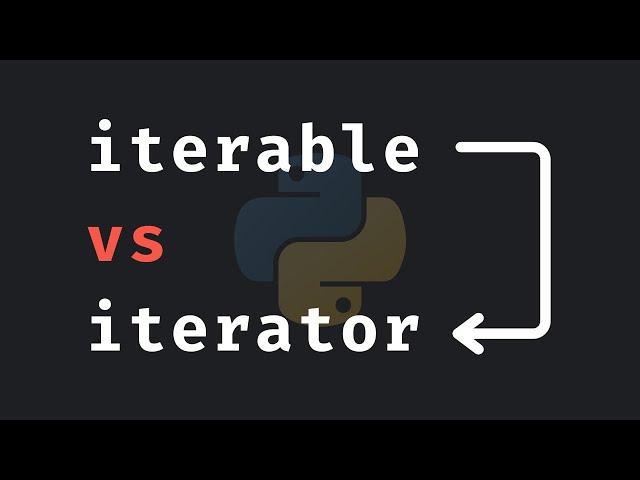Комментарии:

Could you explain how to use 'self'? like in def xyz(self): ?
Ответить
Useful and informative
Ответить
Using a book as an example.
The book is the iterable, the pages are the items in the iterable [ item1, item2 ].
You going through the pages is what is technically referred to as iterating.
So an iterator is what enables you to go through an iterable.
It is what allows you to go through the pages.
An iterable is a collection of items.
Python by default provides different types of iterators for each type of iterable, each iterator has it only unique benefits. You can create your own. Example: A generator object is an iterator.

Haha, the police
Ответить
Thank you 😊
Ответить
Thanks for knowledges.
Ответить
🎉
Ответить
where do these fit in within python's built in data type hierarchy?
Ответить
You should have imported these from `collections.abc`, not `typing`. That's the modern way to do it
Ответить
Thanks
Ответить
Is there a fork of Python that enforces annotations in "compile" time or in runtime?
Ответить
How to make any auto login script using combo list tips make a video please
Ответить
If you have 'Luigi', then why you don't have 'Mario'?
Ответить
Excellent information!
Ответить
hmmm that seems very similar to generators. I have made generators before that says next(some_gen) to increment to the next item
Ответить
nice. I use generators by yielding. and I like making them infinite so there is no running out of elements. Won't throw an exception
Ответить
How luch faster is this than just
For i in range(len(list_)):
Print( list[i] )
Lol

too complicated , you start with a lot of data types and all sugary syntaxes. Could have just explained with the basic syntaxes.
Ответить
Thanks!
Ответить


























